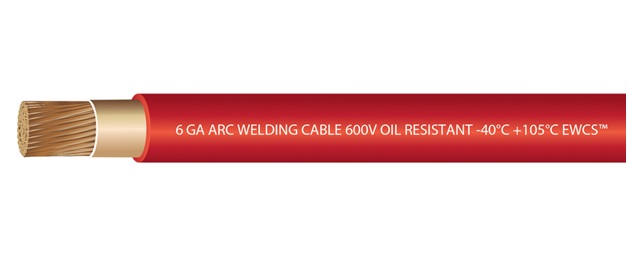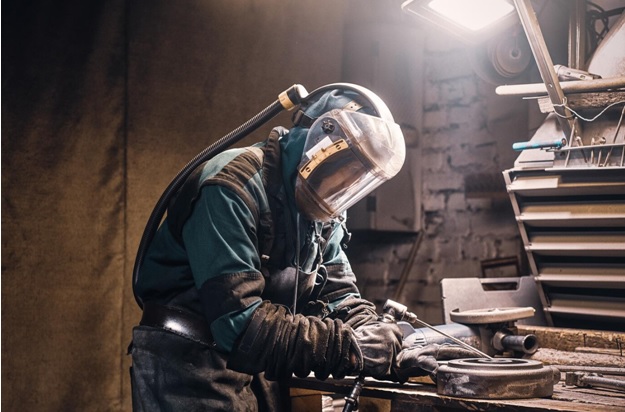Cable Care Essentials: Protecting Your Investment in Flexible Welding Cable
7th May 2024
You're in the middle of an important weld, focused on creating a strong, secure joint. Suddenly, a concerning crackle fills the air and the smell of smoke and something burning fills the air.
When you start inspecting your equipment, you discover a damaged section on your flexible welding cable. Naturally, everything grinds to a halt, and you're left frustrated knowing that there’s going to be a delay in your progress.
Flexible welding cables are essential tools for welders, offering superior maneuverability and access compared to standard welding cables. But like any workhorse tool, proper care and maintenance are crucial for maximizing its lifespan and preventing costly breakdowns.
Let’s dive into flexible welding cable care and cover some practical tips on maintaining and storing your cable to ensure it delivers optimal performance for years.
Understanding Cable Gauges
Flexible welding cables come in various gauges, each with a specific amperage rating. Selecting the right gauge cable for your welding project is crucial for safety and optimal performance. Here's a breakdown of some common flexible welding cable gauges and their typical applications:

- 6 Gauge: This is a relatively thin and flexible cable with an amperage rating typically ranging from 100 to 150 amps. It's suitable for light-duty welding applications like sheet metal work or thin pipes.
- 4 Gauge: This is a mid-range cable with an amperage rating typically ranging from 150 to 200 amps. It's a versatile option suitable for a wider range of applications, including thicker materials, MIG welding, and some TIG welding projects.
- 2 Gauge: This is a thicker and less flexible cable with an amperage rating typically ranging from 200 to 300 amps. It's ideal for heavy-duty welding projects involving thicker metals, high amperage requirements, and industrial applications.
- 1/0 Gauge (One-Aught Gauge): This is a very thick and powerful cable with an amperage rating typically exceeding 300 amps. It's used for heavy industrial welding projects requiring maximum amperage output, such as thick pipes or structural steel.
Important Note: These are general guidelines, and the specific amperage rating for a particular cable gauge can vary depending on the manufacturer. Always refer to the manufacturer's specifications for the exact amperage rating of your cable.
When choosing a flexible welding cable gauge, consider the following factors:
- Maximum amperage output of your welding machine: Ensure the cable gauge you select can handle the maximum amperage your welding machine can produce.
- Typical amperage range used for your projects: Choose a cable with an amperage rating that comfortably accommodates your usual welding amperage needs.
- Cable length: Longer cable runs experience some voltage drop. To compensate for this, you might need to choose a slightly larger gauge cable for longer distances.
By understanding the different cable gauges and their applications, you can select the optimal cable for your specific welding needs, ensuring safety, efficiency, and a long lifespan for your valuable welding equipment.
Daily Maintenance Practices for Flexible Welding Cable
By incorporating these simple practices into your daily welding routine, you can significantly extend the lifespan of your flexible welding cable:
- Daily Inspection: Before each use, take a few minutes to visually inspect your cable for any signs of damage. Look for cuts, cracks, exposed wires, or areas of excessive wear on the outer jacket.
- Mind the Bends: While flexibility is a key advantage, avoid kinking or sharply bending the cable at extreme angles. This can damage the inner strands and compromise the cable's performance.
- Keep it Cool: Excessive heat exposure can deteriorate the cable's insulation. Whenever possible, avoid letting the cable come into direct contact with hot metal or sparks.
- Clean Up: After each use, wipe down the cable with a damp cloth to remove any dirt, grease, or welding spatter. This will help prevent corrosion and maintain the cable's insulation integrity.
Proper Storage Techniques for Flexible Welding Cable
When your welding project is complete, proper storage is vital to protect your flexible welding cable from damage and ensure it's ready for the next task. Here are some key storage tips:
- Coil It Up Neatly: Avoid leaving the cable in a tangled mess. Instead, neatly coil the cable using loose loops to prevent kinks or tight bends.
- Store it Indoors: Ideally, store your flexible welding cable indoors in a cool, dry place. Avoid extreme temperatures or direct sunlight exposure, which can degrade the cable's insulation.
- Hang it High (Optional): If space is limited, consider hanging the cable using loops or hooks. This allows for air circulation and prevents the cable from resting on a potentially abrasive surface.
- Keep it Organized: Store your cable with its accompanying connectors. This helps prevent damage to the cable ends and keeps everything organized for the next use.

Replacing Your Flexible Welding Cable
Even with proper care, flexible welding cables have a finite lifespan. Here are some crucial signs that indicate it's time to replace your cable for safety and optimal performance:
- Visible Damage: This is the most obvious indicator. If you notice any significant cuts, cracks, exposed wires, or areas of melting on the outer jacket, it's time to replace the cable immediately. Damaged cables pose a safety risk and can compromise welding performance.
- Reduced Flexibility: Over time, the cable might become stiff and difficult to maneuver due to internal wear and tear. This reduced flexibility can hinder your ability to reach tight spaces and affect weld quality.
- Frequent Cable Issues: Are you experiencing recurring problems like overheating, connection issues, or excessive voltage drops? These could be signs of internal cable damage. A replacement cable is recommended to ensure safety and avoid further complications.
- Amperage Rating Concerns: If you're planning on undertaking welding projects requiring a higher amperage output than your current cable is rated for, it's essential to upgrade to a cable with a higher amperage capacity. Using an undersized cable can lead to overheating, damage to the cable, and even pose a fire hazard.
Remember, replacing a worn-out cable is a relatively small investment compared to the potential risks and costs associated with using a damaged cable. By prioritizing safety and performance, you can ensure a smooth and successful welding experience.
Every Weld Counts – Extend the Life of Your Welding Partner
Remember, a well-maintained cable translates into fewer project delays, reduced replacement costs, and ultimately, a safer and more efficient welding experience.
At EWCS Wire, we offer a wide selection of high-quality flexible welding cables for various applications. Check out our catalog here on our website to explore our offerings, and fill your toolbox with the proper equipment to maximize your output.

